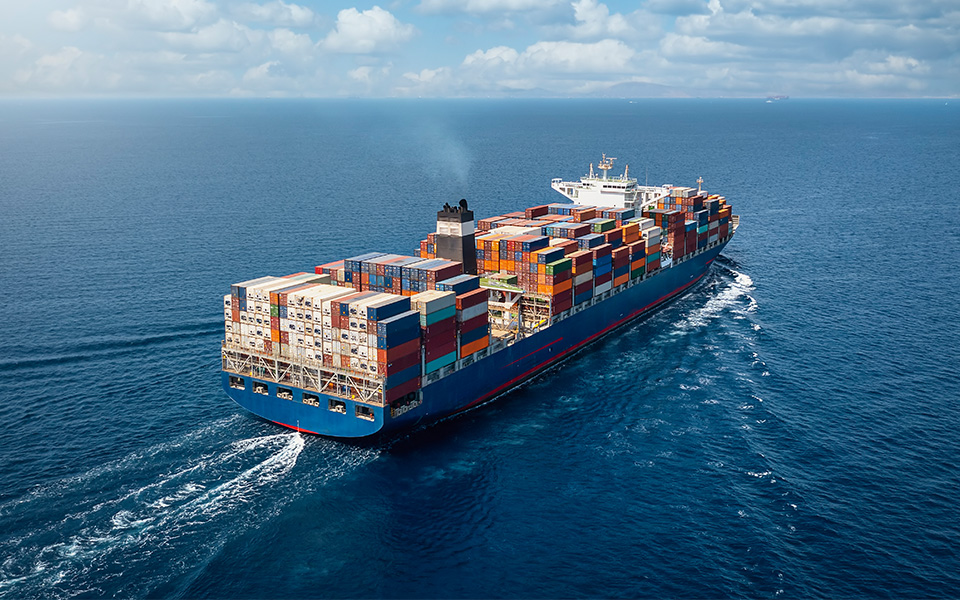Cross-border considerations for improving international cold chain management

*On June 1, 2023 Emerson’s Climate Technologies business became a new standalone company – Copeland. Though our name has changed, we are building on more than a century of HVACR innovation and industry leadership, and Copeland continues to offer the same products, industry stewardship, and learning opportunities you’ve grown to trust. Information found on this webpage posted before June 1, 2023 may contain our old name or branding, but you can be at ease knowing it was created with the knowledge and expertise of Copeland.
In part one of an article series for Fresh Plaza, I reviewed best practices for monitoring and securing cross-border, perishable shipments throughout the international cold chain. A recently published follow-up article focused on the importance of temperature management during cargo transfers and complying with different countries’ import regulations.

As I discussed in the first blog, maintaining consistent holding temperatures and following proper quality assurance (QA) processes are especially critical as shipments cross borders into foreign countries. But implementing proper cold chain management best practices can be even more difficult within international shipping lanes, as the export process introduces a variety of additional considerations and potential hazards to perishable quality.
Unlike domestic shipments that often take place in a matter of days, international shipments utilize multiple modes of transportation that can last from days to weeks and even months. What’s more, these extended cold chain journeys may pass through higher-risk zones or unfamiliar regions that can make shipments more prone to delays, theft, tampering and associated complications. My previous blog demonstrated proven strategies for minimizing those security risks and protecting perishable shipments by being ever aware of a shipment’s location.
It’s equally important to understand that international shipments are likely to experience changes of custody as they cross over borders into new countries. Shipments are subject to an export country’s specific border and customs procedures, which are driven by their own unique food safety regulations.
Expedite transfers and inspections
As international shipments change custody, the potential for temperature excursions can increase significantly. Typically, different carrier companies, third-partly logistics (3PL) providers and/or drivers are designated to handle shipments in their native countries. As a result, shipping changes of custody occur commonly during border crossings and generally take place in one of two ways:
1) Dropping off the shipment trailer to be picked up by another carrier
2) Completely transferring all perishable goods to a new refrigerated trailer
Because container and/or trailer doors may also be open during border inspections, it’s essential to not allow perishables to experience temperature fluctuations during transfers and inspections.
Connected cold chain temperature tracking software — such as Copeland (formerly Emerson’s Climate Technologies business) Oversight cargo software — enables real-time visibility to alert stakeholders during critical transfers. Oversight supports international cold chain QA initiatives via several means:
- Enabling geo-fences along border transfer points to alert stakeholders to monitor and manage transfer efficiencies
- Monitoring temperatures to help ensure product quality and safety
- Gaining the intelligence and information to make changes to delivery destinations or diverting product to the nearest point of sale
Comply with import regulations
Food safety regulations often differ greatly among the countries of origin (i.e., where goods are produced) and the countries to which goods are being shipped. In many cases, the framework and enforcement of these requirements are often much stricter in destination countries, such as the U.S. or the U.K.
Perishable food stakeholders should be prepared to understand and demonstrate proof of compliance before crossing a border. Typically, this requires the ability to produce temperature logs that provide a clear record of refrigerated shipping container temperatures throughout the cold chain journey.
A combination of expertise and cold chain tracking software can alleviate the complexities of cross-border inspections and foreign country regulatory compliance. Stakeholders should partner with companies that have a network of dedicated international cold chain experts ready to advise on complying with the regulatory requirements of various destination countries.
For example, Copeland can help stakeholders to develop standard operating procedures (SOPs) and QA programs geared toward maintaining compliance at various points (or ports) of entry. In addition to providing real-time notifications and alerts, Oversight software can support these efforts via:
- Maintaining historical records of shipments
- Providing inspectors with a link to post-shipment temperature and location information
- Contributing to a data warehouse from which cold chain insights, reports and scorecards can be generated
Follow the data
By following these proven strategies and best practices, global stakeholders in the perishable cold chain can address a full range of cross-border challenges. A combination of data-driven software and cold chain expertise gives stakeholders the tools they need to maximize product quality, safety and security.
- Automate record-keeping of shipment temperatures.
- Aggregate data points from stakeholders and throughout changes of custody into a unified view of real-time cold chain status.
- Receive real-time alerts to make decisions quickly and protect goods when needed.
- Uncover root causes of issues and provide objective score-carding.
Oversight cargo software and services can help your company develop QA processes that consider international cold chain compliance, quality and safety. To learn more about these robust capabilities, please visit our website.

8 proven strategies for rigorous cold chain management
by Dan Knauer | Cold Chain
Preparing for the approval and safe use of A2Ls in commercial refrigeration applications...
Protection for high-value shipments just got even better
by Alex Axelsson | Cold Chain, Transportation
We’re excited to announce the release of Copeland’s newest real-time tracker, the GO Real-Time...

Three proven strategies to prevent cargo theft
by Chris Lafferty | Cold Chain, Transportation
The over-the-road (OTR) transport industry is experiencing a surge in cargo thefts. As thieves...
The post Cross-border Considerations for Improving International Cold Chain Management appeared first on Copeland.